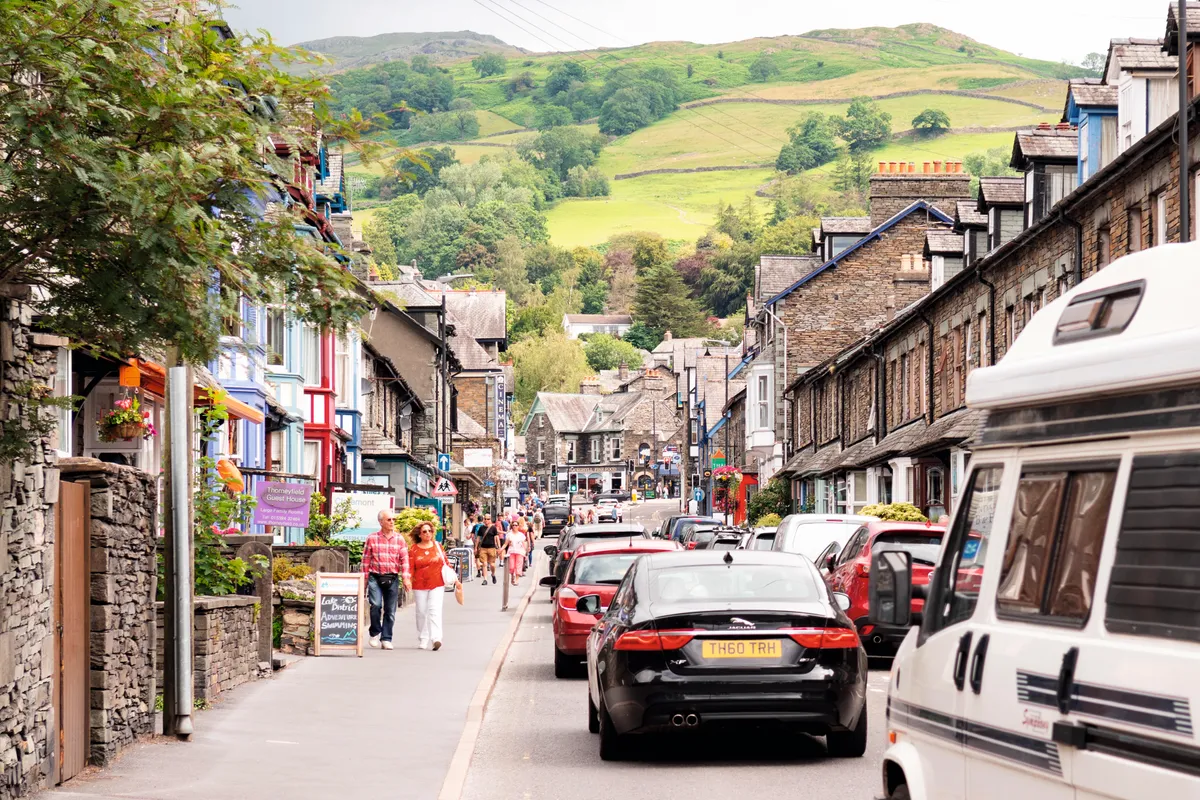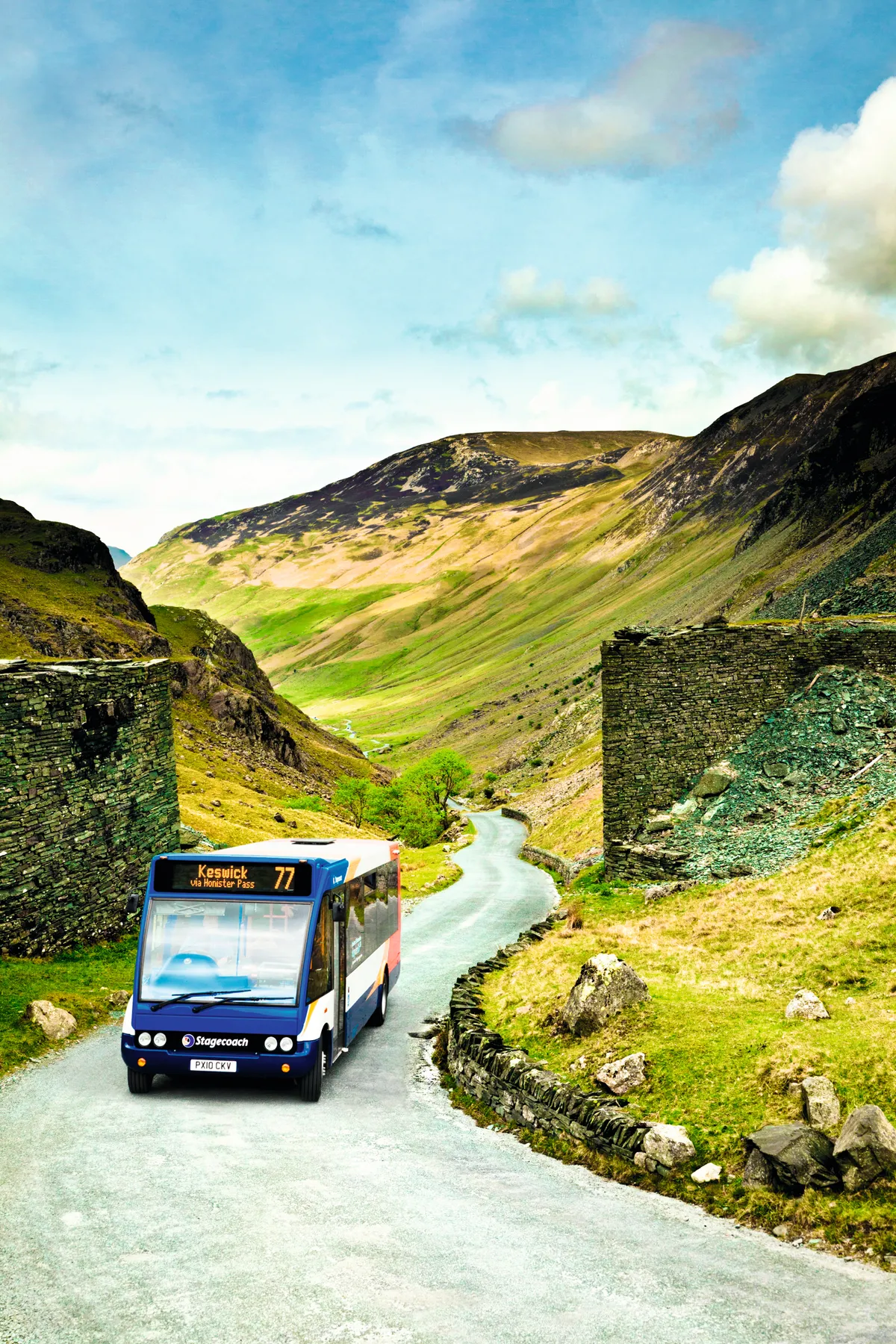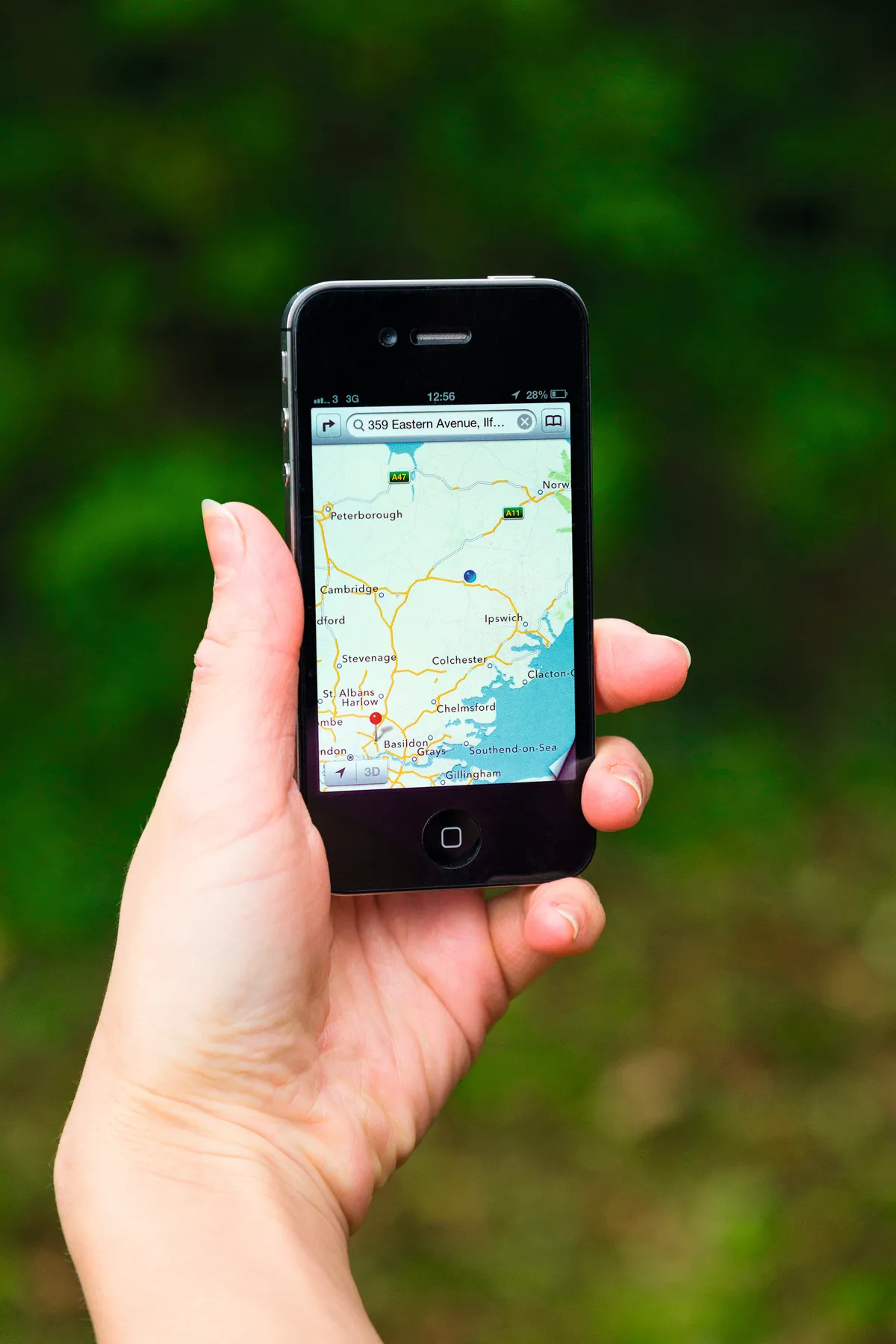The 442 bus runs from Buxton to Ashbourne in the Peak District. It must be one of the most beautiful bus journeys in England, winding its way along country lanes as it criss-crosses the River Dove, which marks the Derbyshire and Staffordshire border.
The bus visits some of the Peak District National Park’s prettiest and most visited settlements, such as Tissington, with its 17th-century hall. The village’s famous well-dressings alone welcome 50,000 visitors a year. This bus should be packed to the gunnels with tourists, but instead the service has been cut to the bone. The Sunday service, which you would think the heaviest used by visitors, was cancelled altogether in 2018.
As you sit on that half-empty bus in the summer months, there is plenty of time to contemplate the spectacular White Peak scenery, because the chances are you will be snarled up in a traffic queue. As you watch yet another farmer waste half a day sitting in traffic trying to reach his fields, it’s tempting to think that in order to prise us out of our cars it is going to take a force at least as seismic as that which produced the landscape we have all come to enjoy.
Yet the congestion is now such – and the imperative to reduce carbon emissions so great – that national park leaders all over the country are starting to mutter the unthinkable: is it time to ban private cars from our national parks?
Emergency powers
We all saw the pictures over the Covid-19 summer, as lockdown restrictions eased and people suddenly descended on the nation’s honeypots. The people queueing to walk up Snowdon, police towing away cars that had been carelessly abandoned rather than parked. In the Lake District, the situation became so bad that parked cars blocked a narrow lane on the eastern shore of Coniston, preventing an ambulance from responding to a call-out. Cumbria County Council was forced to use emergency powers to close the lane.

“It was a free-for-all,” one observer told me. “People knew parking enforcement officers weren’t working, so they were leaving their cars anywhere.” The road remained closed to tourist traffic for the remainder of the summer.The great fear in the national parks is that with coronavirus restrictions showing no signs of abating, next summer threatens to bring more of the same. This is unsustainable, both in terms of its effect on local communities and on the environment.
National park leaders are guided by the Sandford Principle, which came out of a review headed by Lord Sandford in 1974. It states that: “Where irreconcilable conflicts exist between conservation and public enjoyment, then conservation interest should take priority.”
“It is a difficult conversation because people have different views,” says Emma Moody, lead sustainable transport strategy advisor with the Lake District National Park, of the Coniston road closure. “Some people think they have a right to drive along there – it’s a road. Others think that it should be made available for sustainable transport, so people can walk and cycle along there and residents can get to their houses.”
The congestion that led to the Coniston road closure is repeated at ‘honeypot’ locations all over England and Wales. Currently, 93% of visitors travel to the national parks by car. The Lake District’s community of around 40,000 has to cope with 20 million visitors a year. These numbers demonstrate that something has to give. “It’s not about reducing the number of visitors, we need to get that clear,” says Moody. “We don’t want fewer visitors, but we want fewer of them to use their cars.”
Cuts to funding
The national parks have long understood the need to get people out of their cars and on to public transport, but as the urgency has increased, the public transport network has got worse. According to the Campaign for Better Transport, overall funding for bus services has been cut by 33% during the years of austerity. In some rural areas, such as Derbyshire, funding has been cut up to 55%, and Cumbria County Council no longer subsidises commercial services at all.

Opening up the countryside
Rural bus services are funded by local authorities for their residents, not visitors, and 88% of households in national parks own cars: this is not a recipe for a good rural public transport network, or a low-carbon economy.
In 2019, Julian Glover published the Landscapes Review, a Government-commissioned independent review of national parks and Areas of Outstanding Natural Beauty (AONBs). Glover called for radical change in the way our national parks are run, including widening access to those sectors of society that do not currently visit the countryside, and the parks taking a strategic lead on the planning of sustainable public transport to get them there. He pointed to pilot projects in the Lake District ,which now form a part of its ‘Transport 2040 Vision’, to show what was possible.
“The programme itself was set up to tackle visitor travel, not because we don’t care about local people by any means, but because that has the biggest impact on carbon and on traffic,” says Moody. “But while it was focused on the visitor, we did find that local people made a lot of use of [transport] measures that we put in.”
The solutions are out there, it is just a case of people’s willingness to use them. Common elements for all the parks include a transport hub on the edges where people can arrive by train or car (electric cars, of course – charging points would have to be provided) and then swap to either electric buses, cycles or ebikes, walking routes, or some combination of all three. The common theme is sustainable integrated transport – and no cars.
For Alison Kohler, director of conservation and communities at Dartmoor National Park, getting people to switch to public transport is not “just something that is nice to do” but “a need” to do.
“Over the next 25 years we are looking at a 12% increase in our visitors just through new development on the edge of the national park,” says Kohler. “How do we cope with that? Do we start building lots more car parks?”
The plan is to move people on to sustainable transport with a mix of carrot and stick. These might include car-free days and road charging, with exemptions for local people. One idea of Kohler’s is to have a car-free day with the aim of re-experiencing the peace of that first spring lockdown, when so many people were moved to connect with nature for the first time.
It may be that there is a generational aspect and the boomers – those in their 70s and 80s – will be the most difficult to separate from their cars. Research shows that younger
people are less likely to drive now than they were 25 years ago, and more likely to use
public transport.
Ruth Bradshaw, policy and research manager for the Campaign for National Parks, sees public transport provision as a matter of social equity, in addition to the environmental concerns. Better public transport is essential if the Landscapes Review’s recommendation that access is widened to include different socio-economic groups is to be realised.
“There is a lot of evidence that young people are less likely to have driving licenses,” says Bradshaw. “So there is a whole group of people who are only going to be able to get [to the national parks] by public transport.”
While Covid-19 has devastated public transport services in the short term, Bradshaw thinks that long term it may have created the kind of disruption to the business model that provokes real change.
“It would require a whole reorganisation of the way public transport and bus services are run in this country,” says Bradshaw. “I think this current situation is an opportunity to do that, in the way that all sorts of things are being relooked at now.”
High-tech travel solutions for rural areas
In the next few years, we will see some of the digital services that are affecting transport in the cities begin to work in the countryside,” says Julian Glover, author of the Landscapes Review. “The idea that you might be able to do ride-sharing, or get a taxi to pick you up – you will be able to go for a walk and use a form of transport to take you back which you could summon on your phone.”

Glover is echoing the call of the Campaign for National Parks in wanting Uber-style tech to come into our national parks. It is already starting to happen: the Vamooz app uses crowdfunding technology to share the costs of buses into the Yorkshire Dales National Park. Any group or individual can use the app to plan a journey that others can then sign up for and buy ‘in bulk’.
Liftshare matches people up to share journeys, meaning fewer cars clogging the lanes. And there is a whole army of volunteer drivers and minibuses in our national parks who are taking over the role of commercial bus operators that cannot run these routes at a profit. If these vehicles can be ‘networked’ with technology, on-demand services can put an end to near-empty buses on the roads.
Andrew Griffiths writes about conservation and the environment and covers topics ranging from policy to the practical restoration of natural processes. He lives in the Peak District
